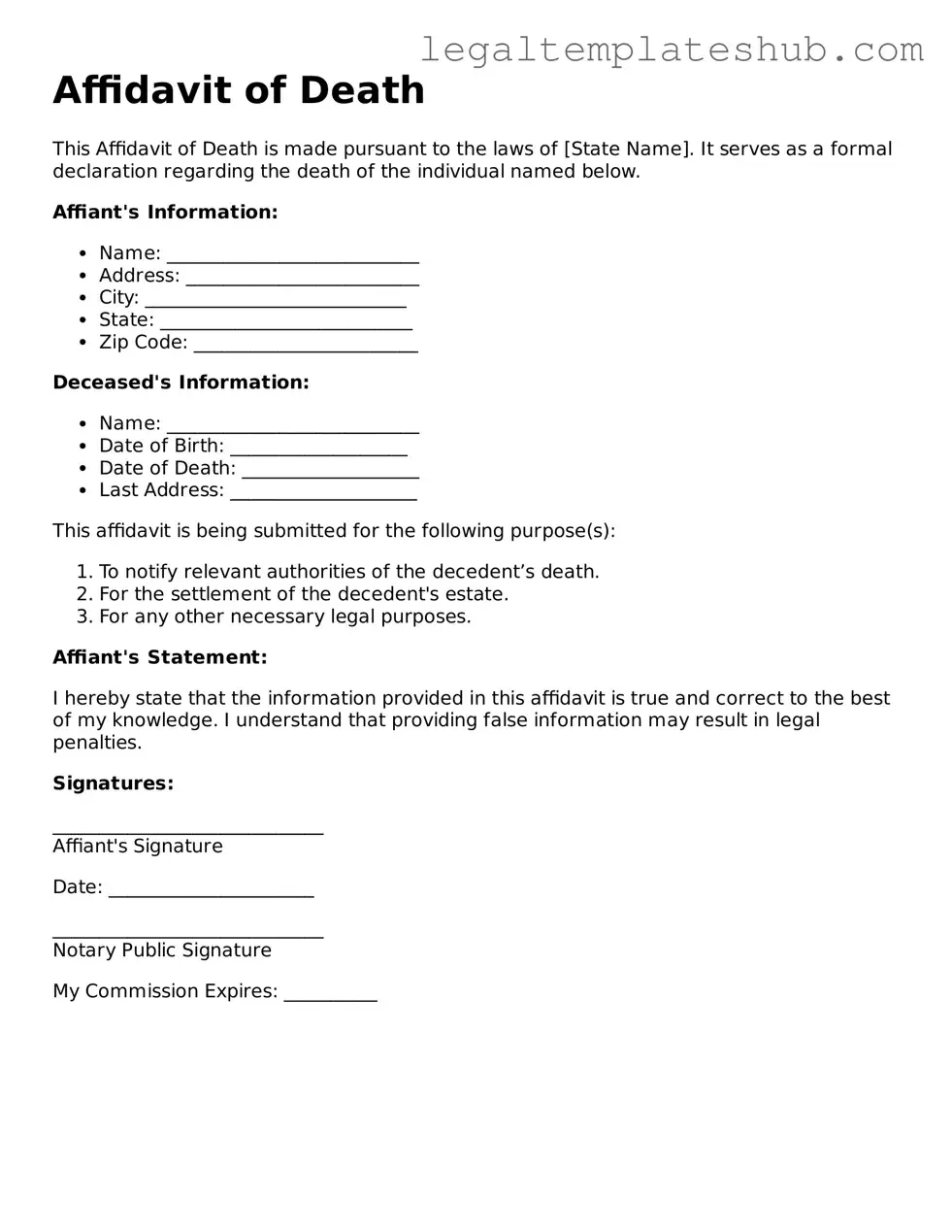Printable Affidavit of Death Template
The Affidavit of Death form is a legal document used to officially declare an individual's death. This form serves as a vital record for settling estates and handling various legal matters. Understanding how to properly complete this form can ease the process during a difficult time.
To get started on filling out the Affidavit of Death form, click the button below.
Access Editor
